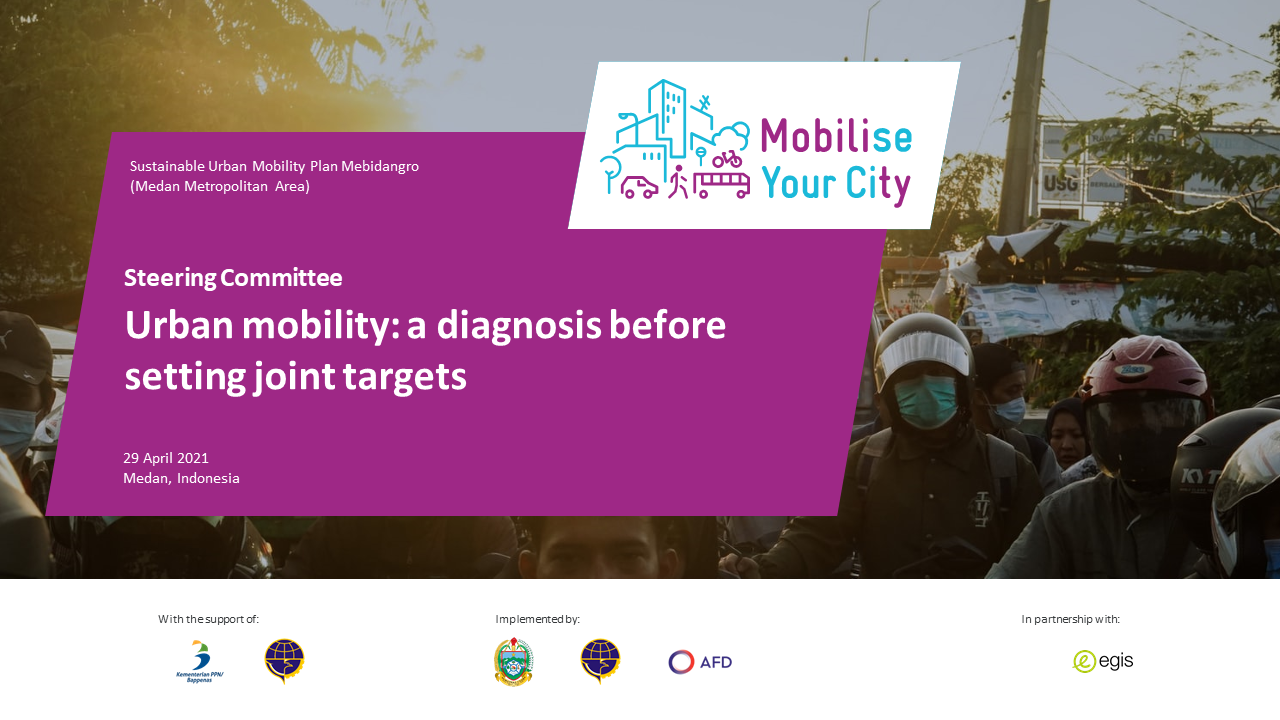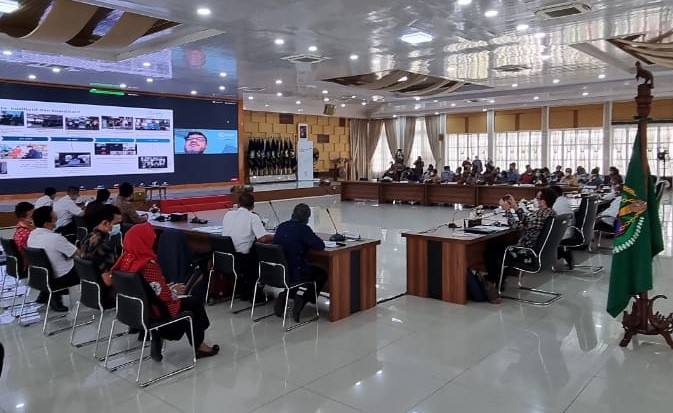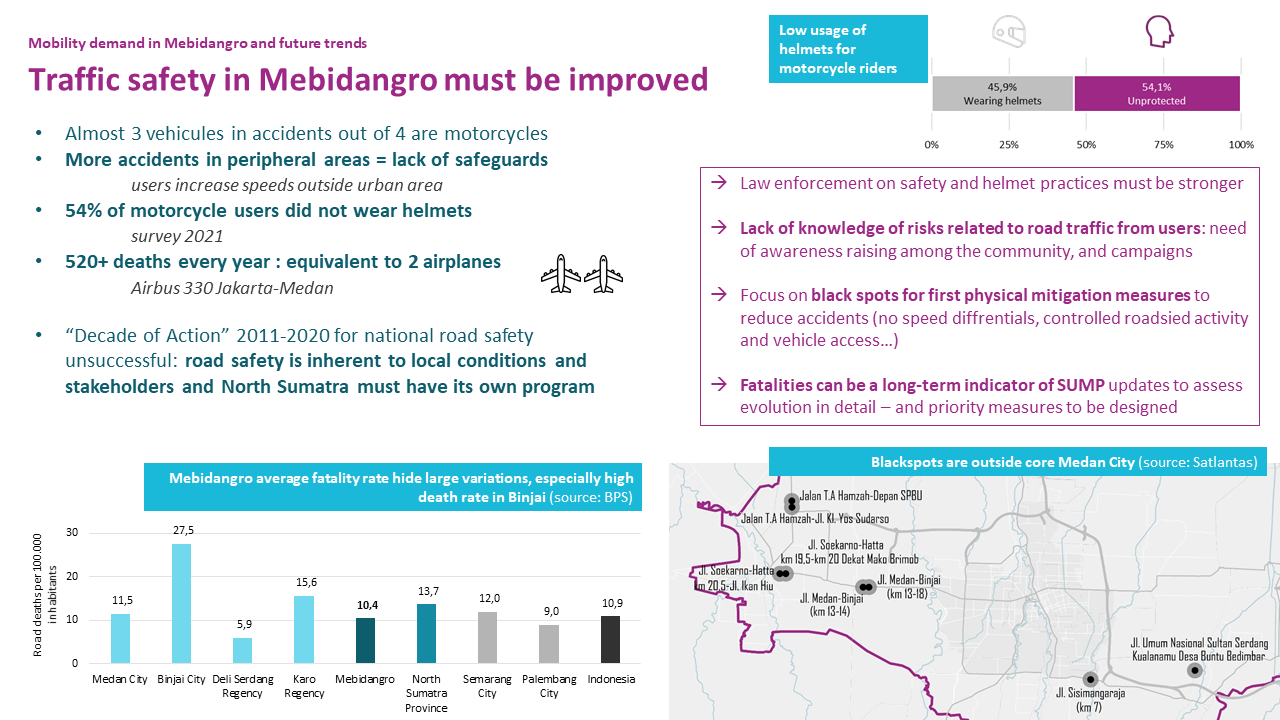Building consensus on mobility diagnosis findings before setting common targets, an important step for Mebidangro SUMP’s elaboration


Sharing the Main Results of the Diagnosis
Since November 2020, the Medan Metropolitan area (Indonesia)[1] has engaged in a process to transform and modernise its urban mobility system with the elaboration of a Sustainable Urban Mobility Plan (SUMP).
On April 29th this year, the results of the diagnosis on urban mobility in Medan Metropolitan Area was presented during the SUMP Steering Committee meeting. Chaired by the Governor of North Sumatra, this meeting was gathering the representatives of the cities and regencies of the Medan Metropolitan Area, the National Development Planning Agency (Bappenas) as well as the Agence Française de Développement (AFD) and the Consultant, Egis Rail, in charge of the SUMP’s preparation.
The presentation of the diagnosis is a major step forward in the SUMP elaboration process. It identifies and confirms a shared vision of the urban mobility patterns and issues, paving the way to set common targets to overcome and tackle mobility issues.
The diagnosis phase was launched in November 2020 and ended in March 2021. During this period, and despite Covid-19 situation, Egis Rail managed to conduct a comprehensive data collection work in Mebidangro, with for instance household surveys, traffic counting, on-board surveys and dozens of specific interviews as well as workshops.
From those studies, some major characteristics of the Medan Metropolitan Area and its urban mobility were identified. For instance, at the scale of the metropolitan area, it was found that three out of four households own at least one motorcycle. This illustrates one of the main results of the diagnosis showing that the modal share is dominated by private vehicles (73%), and among them the use of the motorcycle (55%) and the use of the cars (16%).
The modal share for public transport remains low (13%). In this segment of public transport, the Angkot service (known as the local paratransit mode) represents around 6% of the public transport modal share while the trunk lines of public transportation (rail and urban buses) are covering less than 2%. Public transportation supply remains insufficient in terms of quantity (service lines) and quality (level of service) while the population demand is anticipated to increase in coming years.
The baseline assessment has highlighted that population in Medan Metropolitan Area is expected to grow at a strong rate. Based on the demographic analysis, Egis Rail shows that the population is anticipated to increase by 1 million inhabitants in the next 15 years. This demographic trend will increase the pressure on public infrastructures and especially on roads and public transport and would accelerate urban sprawl. In parallel, the Gross Regional Domestic Product (GRDP) is also expected to increase, implying higher levels of motorcycles and cars’ ownership.

Defining a shared vision and scenarios to improve sustainable mobility
While the increase in of private vehicles ownership can be understood as a threat as it could increase congestion, number road accidents (that is already an issue, see picture 2) and GHG emissions and deteriorate the air quality, some opportunities for improvement are preliminarily identified. The territory of the Medan Metropolitan Area offers possibilities to develop mass transit lines as LRT and BRT as well as waterbus services.
Based on this diagnosis and inputs shared by the stakeholders, a strategic vision and scenarios will be developed for the sustainable urban mobility in the Medan Metropolitan Area. The objective is to define targets and a clear action plan. Several challenges will be taken into account such as preparing Mebidangro transit authority roles as well as finding adequate financings to implement this Sustainable Urban Mobility Plan.
Under the MobiliseYourCity Partnership, this Steering Committee meeting was organized by the Transportation Agency of North Sumatra Province, facilitated by AFD, and animated by Egis Rail.
[1] Also known as Mebidangro as it gathers the City of Medan, the City of Binjai, the Regency of Deli Serdang and the Regency of Karo.